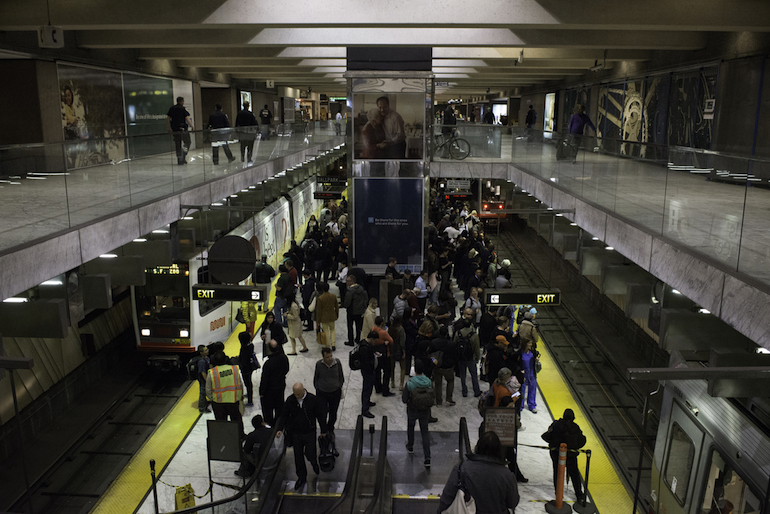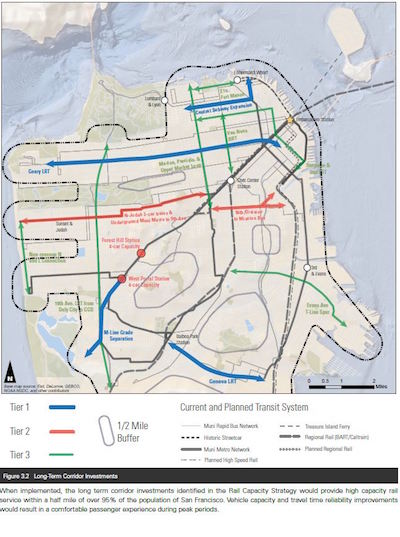This won’t be news to anyone who has squeezed onto a packed N Judah car at Van Ness Station for the evening commute or crammed onto an M Ocean View car at Castro Station to get to work in the morning.
Muni’s rail system is crowded.
And more people are coming. The population of San Francisco is forecast to grow by nearly 30 percent over the next 25 years. Demand for our light-rail trains during peak times is forecast to grow by up to 80 percent by 2040.
That’s why the SFMTA has been working hard since late 2013 on a comprehensive strategy for smart investments in our rail system. These are ways to make the system work better now and decades from now.

Large events, like the Giants' World Series games, require extra effort from Muni staff to keep the system moving. Photo taken October 25, 2012.
So here it is, the Rail Capacity Strategy.
This evolving plan includes improvements we can make in the short term – within the next five years – to ease bottlenecks and make the system more efficient. One example is constructing a pocket track east of Harrison Street along the Embarcadero to move trains around quicker at Embarcadero station, one of the most congested spots in the system.
The strategy also includes long-term rail investments, like extending the Central Subway to Fisherman's Wharf and moving the M Line underground on the west side of the city, which would eliminate conflicts with cars and people, speed transit times and dramatically improve its capacity in an efficient way by using longer trains.
A project like the 19th Avenue/M Ocean View proposal would have benefits well beyond the west side of the city, creating more spots on trains at places like Castro and Church stations in the heart of San Francisco.
There are 17 individual projects and additional system-wide investments listed in the strategy that could be implemented in anywhere from less than three years to more than 30 years. They range from reducing conflicts for trains west of West Portal station to putting part of the N Judah line underground.
Right now, Muni’s rail system is essentially a hybrid of engineering that was state of the art in the 1920s, when the Sunset Tunnel opened, and 1980, when the Muni Metro subway debuted.
The Muni Metro subway portion operates at approximately 60 percent of its design capacity during peak periods because of inconsistent platform lengths, congestion at tunnel entrances and other factors.
SFMTA Director of Transportation Ed Reiskin is pursuing a vision of evolving Muni into a modern network that works for our 21st century city.
The Rail Capacity Strategy is the beginning of that conversation, and it lays a foundation for short, medium and long term actions that the SFMTA can take to modernize our transportation system.
The approach is designed to have four key benefits for riders:
• Alleviate crowding
• Increase coverage area
• Improve reliability
• Decrease travel time
These investments would not be cheap. They're projected to total $17 billion over 30 years. (The near-term investments are being considered for funding as part of the next five-year Capital Improvement Program for fiscal 2017 through fiscal 2021.)
Long-term rail proposals will require more complex funding plans.
Here's why all of these investments are important. They would allow nearly every San Franciscan – at least 95 percent of city's population – to be within walking distance of a rail line and have room to hop on a train when it arrives.
For everyday San Franciscans, this means less time getting to where they are going and more time with their family, friends and loved ones.
Sounds like a good strategy to us.
As we move forward on our capital plans, we'll keep you posted about that progress here.
